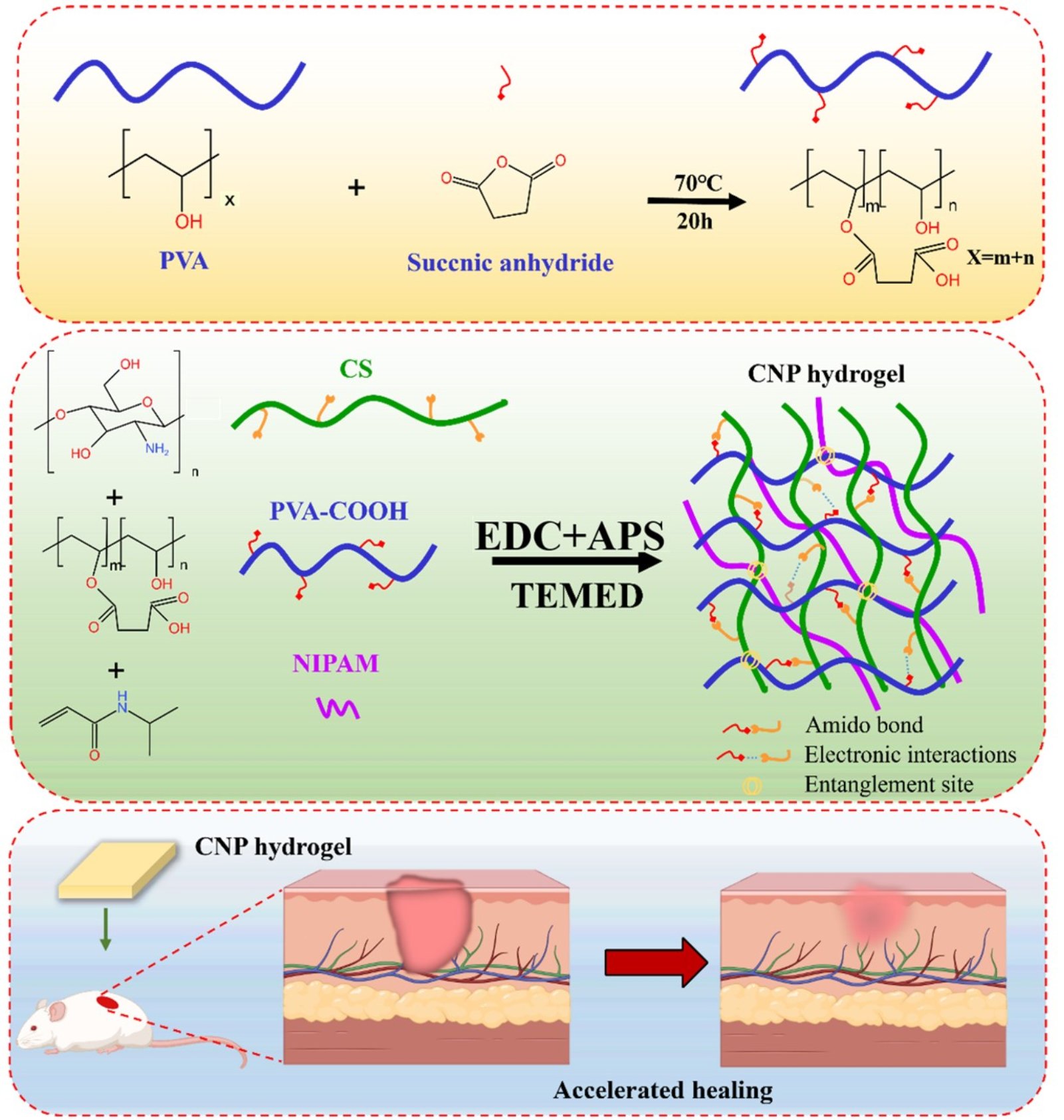Wound repair is one of the most widely practiced aspects of clinical care, with a variety of traumatic and chronic wounds being common. However, conventional dressings often fail to provide an effective environment for wound healing, especially in providing a sterile and moist environment to promote wound healing, which is often accompanied by inflammation or scarring. Therefore, the development of simple and effective wound dressings to meet the healing requirements is of practical application.
In a study published in Biomaterials Advances, Prof.LIN Jinxin from Fujian Institute of Research on the Structure of Matter, Chinese Academy of Sciences, and LU Yanjin, an associate professor at Fujian Normal University, synthesized a carboxylated poly(vinyl alcohol)/chitosan network by using the Schiff base reaction and interpenetrated it by introducing poly(isopropyl acrylamide) chains for the preparation of a new type of hydrogel dressing.
The researchers prepared a safe physically cross-linked hydrogel using a three-dimensional network interpenetrating structure. First, succinic anhydride was grafted onto PVA chains for carboxylation modification using a ring-opening reaction (PVA-COOH), followed by bonded cross-linking of chitosan amino groups using a Schiff base reaction (CS/PVA-COOH). Finally, the poly-N-isopropylacrylamide chains were introduced into the network structure for interpenetration, forming a large number of physical cross-linking sites to obtain CNP hydrogels.
After characterization tests, the researchers found the hydrogel was structurally stable and had a rich porous structure as well as suitable solubility degradation properties, having adhesive(~7.5Mpa), torsional, and compressive properties for use as a wound dressing through some mechanical tests.
Various cytological tests showed that the hydrogel was not significantly toxic to cells and had good biocompatibility. Good antimicrobial properties were also verified in subsequent antimicrobial tests (sterilization rate~99%).
In a mouse model of total skin wound injury, the researchers found hydrogels have excellent pro-healing abilityand and they are able to degrade on their own, promoting angiogenesis, collagen deposition and reducing scarring residues during the healing process.
This study provides an inexpensive, simple and healing-promoting method for wound dressing synthesis.

Flowchart of CNP hydrogel synthesis and schematic of wound application (Image by Prof. LIN’s group)
Contact:
Prof. LIN Jinxin
Fujian Institute of Research on the Structure of Matter
Chinese Academy of Sciences
Email: franklin@fjirsm.ac.cn